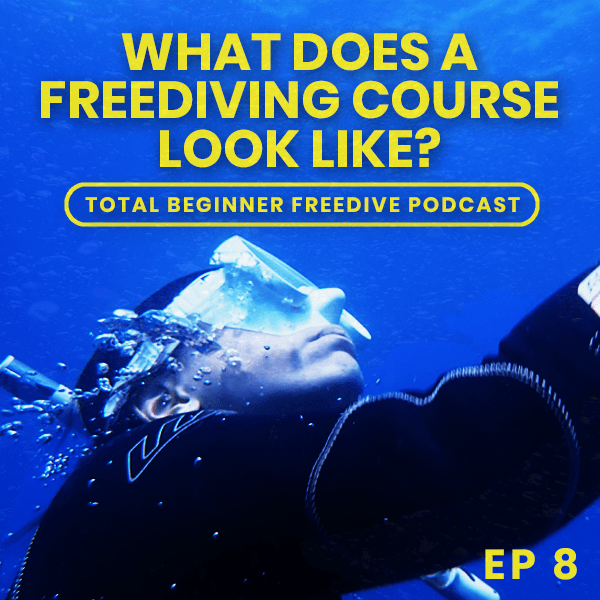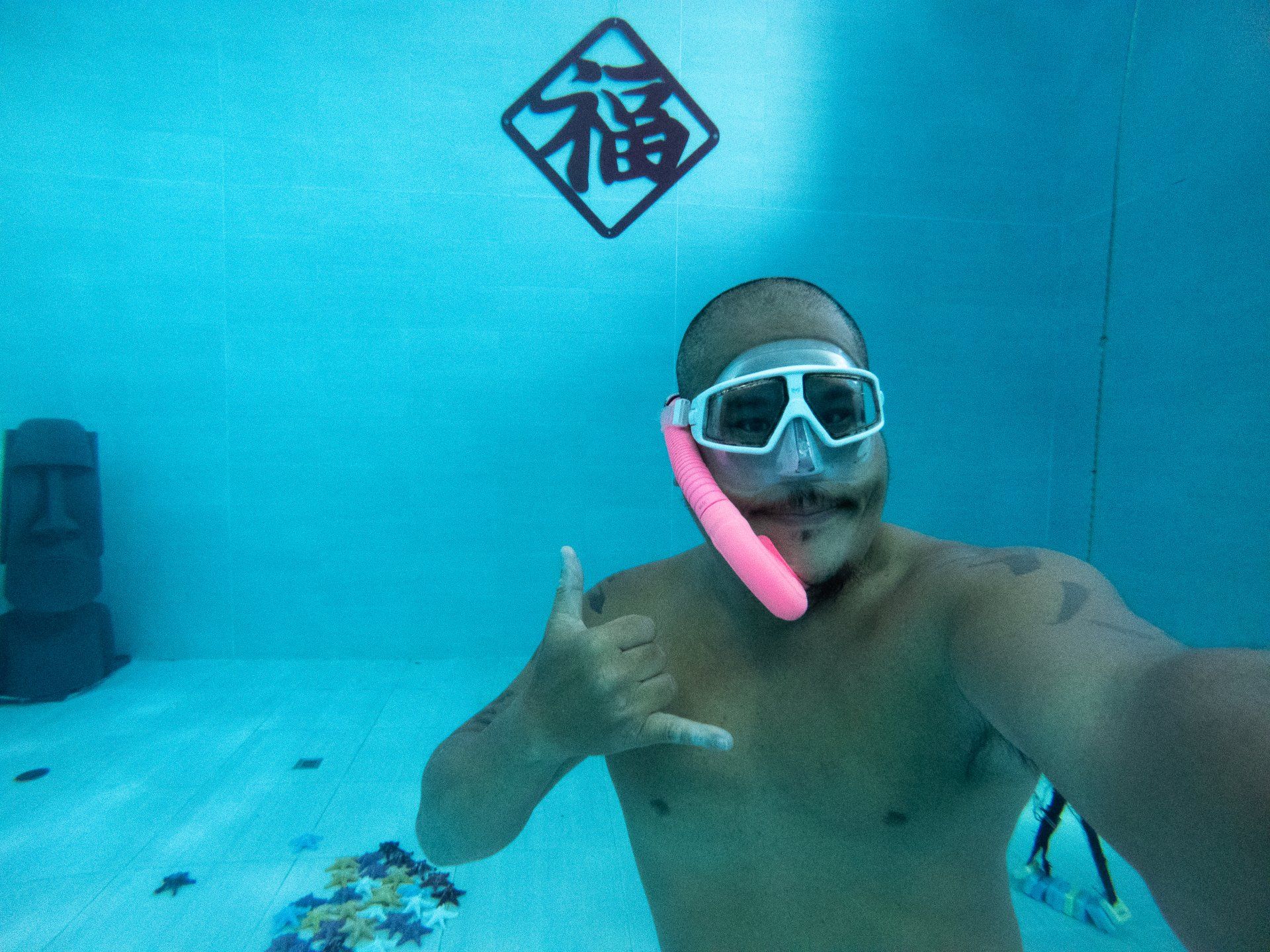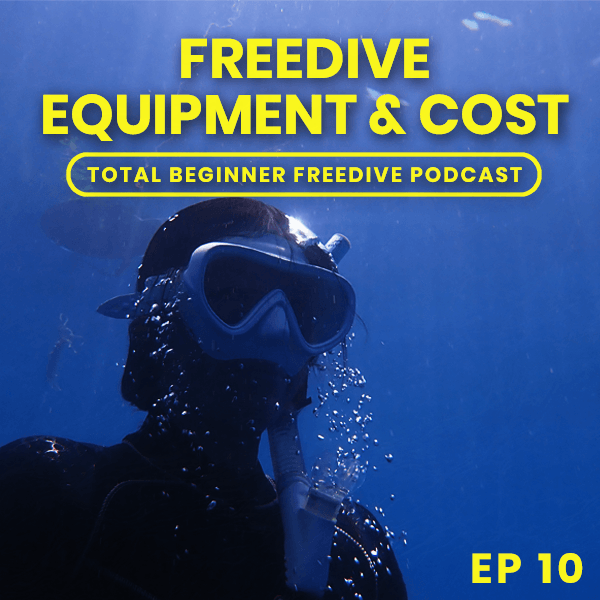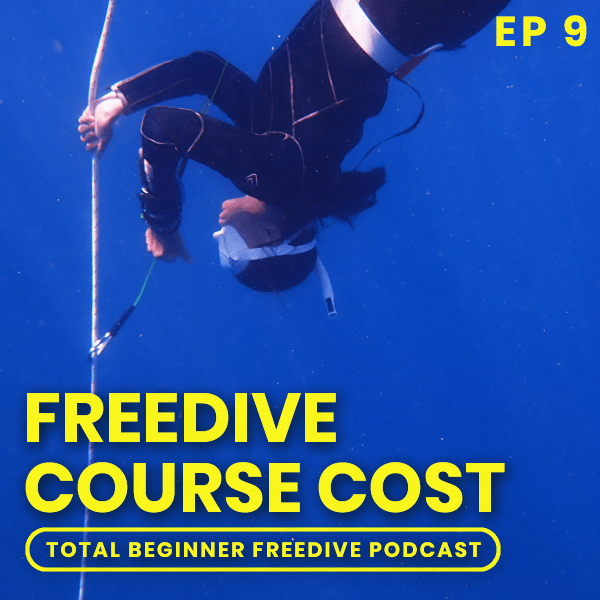Raymond Ko • July 28, 2021
What Does A Freediving Course Look Like

Show Notes
Wondering what taking a freedive course is like? Then this episode is just for you!
This podcast is brought to you by Octopus Freediving
Resources
Facebook Group
Free Beginner FAQ E-book Sign Up
Free Online Freedive Safety Course
Send episode topic ideas or questions to ray@freedivenomad.com
Show us some love by buying from our affiliates partners:
Synctuition - my favorite meditation app and I've tried A LOT
Blue
Cannatine - the BEST nootropic to get my brain to function optimally after diving. 10% discount with that link
Waihana Wetsuits - the coolest looking wetsuits using eco-friendly neoprene. Use the coupon code 0OG0UZZBLP for 15% off
You Can Find Me At
Information about taking a freedive course from me in Taiwan
Freedive Nomad Instagram Account
Freedive Nomad Facebook Group
Freedive Nomad Youtube Channel
Podcast Media Kit
Transcripts
Hello future freedivers
And welcome to the Total Beginner Freedive Podcast brought to you by Octopus Freediving, makers of some of the best freedive accessories on the planet.
This is episode 8 where we walk you through what a freedive course looks like.
JINGLE
Ray here again, the Freedive Nomad and this show’s host.
A beginner freediving course has three parts to it - theory, confined water or pool and open water diving.
Before getting in the water you must learn some freediving theory - when you sign up for a course you will most likely be given a manual to read first and then review that with your instructor either in person or online.
Here you will learn your physics and human physiology related to freediving, equalization, relaxation and breathing techniques, risks and safety protocols. You’ll then need to pass a written multiple-choice test before being certified but not necessarily before you start diving.
Confined water sessions - This can be held either in a pool or in the shallow part of an ocean or lake with little current. This can be done in either 1-2 sessions depending on your instructor or school.
You will learn to do a static breath-hold (as well as buddying and rescue). Static breath hold is where you float on the surface of the water face down while holding your breath trying to stay as still and relaxed as possible. This will help you get used to holding your breath for an extended amount of time with fewer variables to deal with.
You then move onto
dynamic apnea. This is finning horizontally while underwater across the pool with a target horizontal distance to cover, typically 25-40 meters, on one breath. This will help the diver to practice proper finning technique, body and head position while holding their breath and build up your confidence to be able to cover a distance horizontally before tackling it at depth.
Open Water Session - Typically these are done over 2-3 sessions lasting about one and a half hours a session. Depending on where you are, you will be either swimming out to the dive spot from shore or taking a boat out unless you find yourself in one of the half a dozen deep pools in the world.
The instructor will first set up the buoy and line. Around the buoy are handles to hang onto when not diving or when preparing for your dive.
When your instructor is setting up the buoy, take this time to work on your relaxation and to settle down from the swim if there was one or from your boat ride. During these sessions you will work on proper weighting, equalisation, duck dive, finning down and up, bottom turn, buddying and rescue.
During the open water sessions you will learn to descend and ascend using two methods. First one is called free immersion, or I hear it called pull downs a lot in the US where you use the rope to pull yourself down or up with your hands.
This is a good way to start as you can control your depth easily to check or work on your equalization. You then move onto constant weight, or kick downs as it's sometimes called in the US, where you will fin down to your target depth.
And finally the requirements to get certified
- Pass the written exam
- Demonstrate buddying and rescue skills during static, dynamic and depth diving
And pass performance requirements which are different for each agency but it's in the range of
- 1:30 to 2 minute static breath hold
- 25-40m dynamic
- And 10-16m in depth
All with good, proper & clean technique.
Generally each agency has 3 levels for recreational diving. Level one is obviously beginner level. Level two is advanced level and depth requirement is 20-24 meters and level 3 is called masters level and the depth requirement for that is around 32m where equalization starts to become a challenge. Some agencies you can become an assistant instructor after passing a master level course.
Many people can go from a level 1 to a level 2 course without any training in between. However after level 2, that will require some training to reach the performance requirements for level 3.
And after this level you get beyond recreational freediving and into instructor courses and competition courses like the Wave 4 course for Molchanovs.
Just a quick note or disclaimer, this episode has come all from my experience teaching for 3 different agencies, PADI, AIDA and Molchanovs. There are like 9-10 other international agencies out there and most of them have similar requirements but some are very different like Apnea Total which doesn’t really have performance requirements and just require demonstration of proper technique and FII which does the 3 levels in only 2 levels.
And that’s it for today’s episode but before you go,
As I’ve said in previous episodes, the safest and most enjoyable way to learn freediving is to take a freedive course. But I know that not everyone has access to a freedive course. If that’s the case, Ted Harty, a US National Record holder, has a free online safety course for freedivers and spearfishermen. To sign up go to freedivepodcast.com/safety again that’s freedivepodcast.com/safety.
And once again, please sign up for this podcasts Facebook group at freedivepodcast.com/fb where you can write in any questions regarding freediving.
Dive safe and never dive alone and maybe take a freedive course, or at least Ted Harty’s online safety course.





